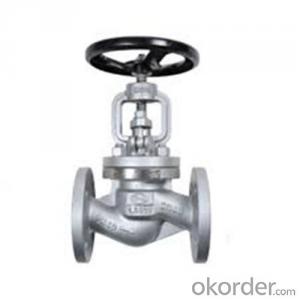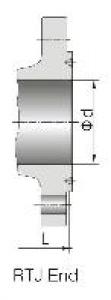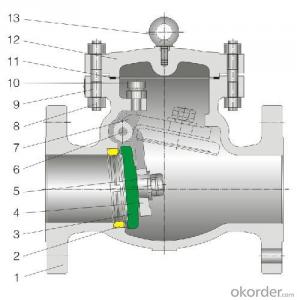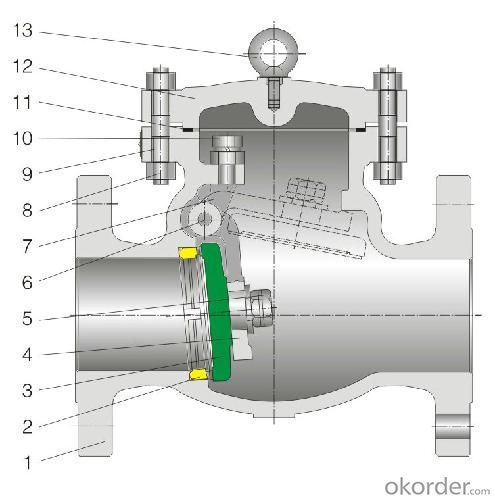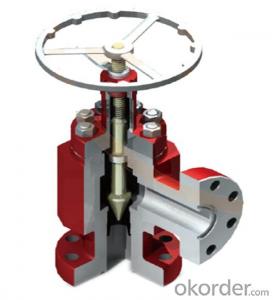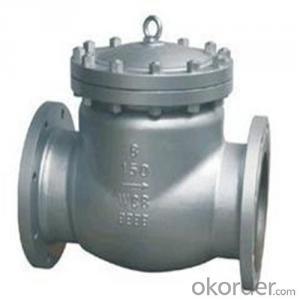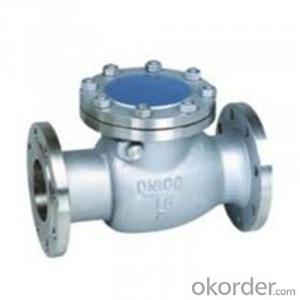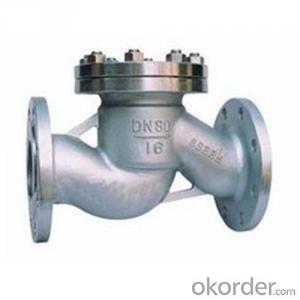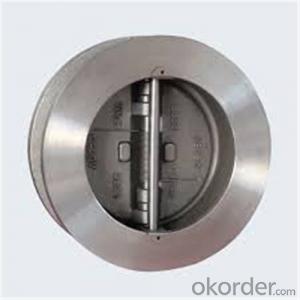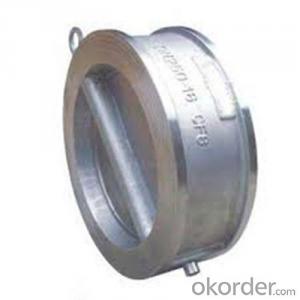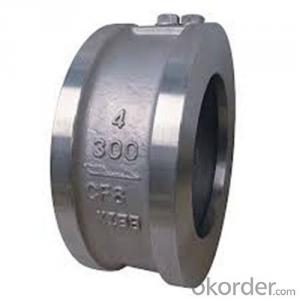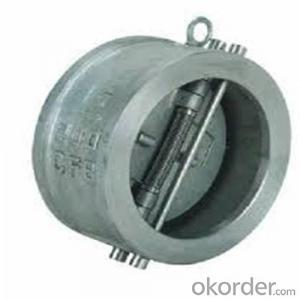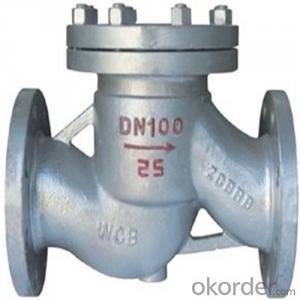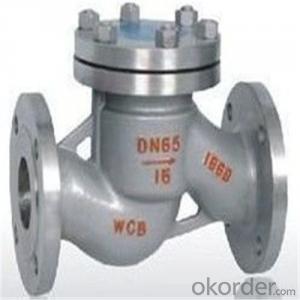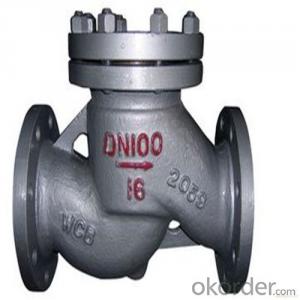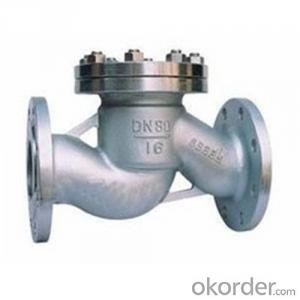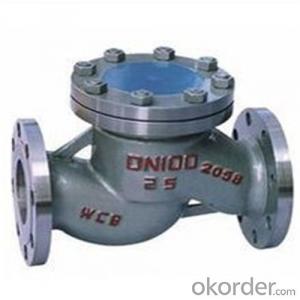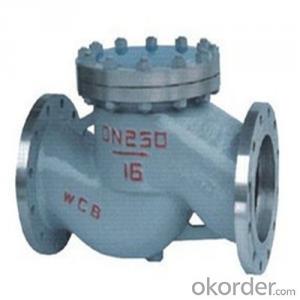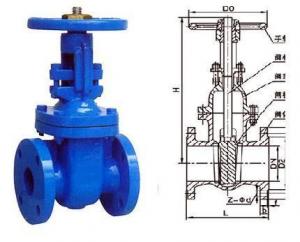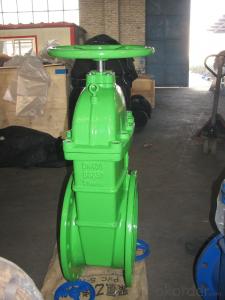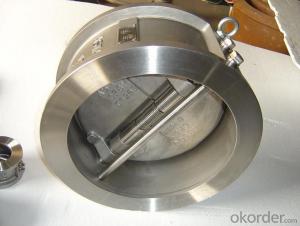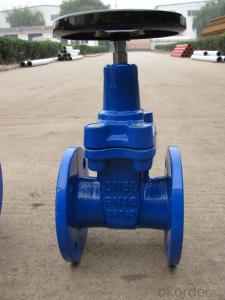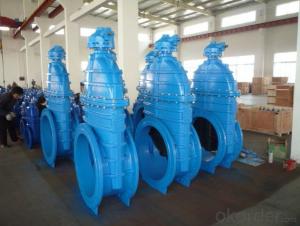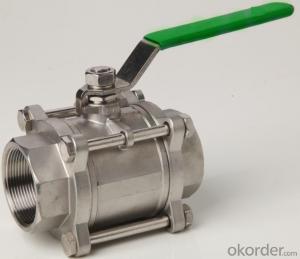API Cast Steel Lift Check Valve size 50 mm
- Loading Port:
- Shanghai
- Payment Terms:
- TT OR LC
- Min Order Qty:
- 10 pc
- Supply Capability:
- 100 pc/month
OKorder Service Pledge
OKorder Financial Service
You Might Also Like
API Cast Steel Lift Check Valve 150 Class
The features of Cast Steel Lift Check Valve
Bolted Bonnet;Swing and lift disc;Metallic seating surfaces.
Body and Bonnet Connection of Cast Steel Lift Check Valve:
The body and bonnet of Class150~Class900 check valves are usually with studs and nuts.And the body and bonnet of Class1500~Class2500 check valves are usually of pressurized seal design.
Body-To-Bonnet Joint of Cast Steel Lift Check Valve:
Stainless steel + flesible graphite wounded gasket is used for Class 150 and Class 300 check valve;Stainless steel + flexible graphite wounded gasket is used for Class 600 check valve,and joint gasket is also optional for Class 600 check valve;Ring joint gasket is used for Class900 check valve;Pressurized seal design is used for Class 1500~Class 2500 check valves.
Seat of Cast Steel Lift Check Valve:
For carbon steel check valve,the seat is usually forged steel.The sealing surface of the seat is spray welded with hard alloy specified by the customer.Renewable threaded seat is used for NPS<10 check="" valves="" and="" welded="" on="" seat="" can="" be="" also="" optional="" if="" being="" requested="" by="" the="" customer.welded="" is="" used="" for="" nps="">12 crbon steel gate valves .Forstainless steel check valve,integral seat is usually adopted ,or to weld hard alloy directly integrally.Threaded or welded on seat is also optional for stainless steel check valve if being requested by the customer.
Parameter of Cast Steel Check Valve:
Standard Criteria | ASME/ANSI/API customize |
Pressure Rating | 150 Class 300 Class 600 Class 900 Class 1500 Class 2500 Class customize |
Valve Size | 50 mm 65 mm 80 mm 100 mm 125 mm 150 mm 200 mm 250 mm 300 mm 350 mm 400 mm 450 mm 500 mm 600 mm 650 mm 700 mm 750 mm |
2 inch 2.5 inch 3 inch 4 inch 5 inch 6 inch 8 inch 10 inch 12 inch 14 inch 16 inch 18 inch 20 inch 24 inch 26 inch 28 inch 30 inch customize | |
Actuator | Automatic customize |
Connection | Butt Welding Flange RF Flange RTJ customize |
1-Body Material | A216 WCB A351-CF8 A351-CF8M customize |
2-Seat ring | A351-CF8 A351-CF8M A105+13Cr Tool Steel+A105 customize |
3-Disc | Tool Steel+A216 WCB A351-CF8M A351-CF8 A216 WCB+13Cr customize |
4-Arm | A351-CF8 A216 WCB A351-CF8M customize |
5-Nut | A194 8M A194-8 A194 2H customize |
6-Arm pin | A182-F6a A182-F316 A182-F304 customize |
7-Yoke | A351-CF8 A351-CF8M A216 WCB customize |
8-Bonnet nut | A194 8M A194-8 A194 2H customize |
9-Bonnet bolt | A193-B8 A193-B8M A193-B7 customize |
10-Bolt | A193-B7 A193-B8 A193-B8M customize |
11-Gasket | graphite+304 graphite+316 customize |
12-Bonnet | A216 WCB A351-CF8M A351-CF8 customize |
13-Eye bolt | A181 customize |
Design Standard | API 6D BS 1868 customize |
Connection Standard | API 605 ASME B 16.25-2007 ASME B 16.47A ASME B 16.47B ASME B 16.5 MSS SP-44 customize |
Test Standard | API 598 API 6D customize |
Face to Face | ASME B 16.10 customize |
Pressure-temperature ratings | ASME B 16.34-2004 customize |
Wall thickness dimension | API 600 BS 1868 |
FAQ of Cast Steel Check Valve:
Q1:I can’t find the type of steel check valve which I need. what can I do?
The chart above only lists out some common composition of steel check valve parts.We may provide other different parts material composition according to the customer's request or the actual valve working condition.
Q2:Which certification do your products pass?
Our products are in accordance with ISO 9001、ISO 14001、API 6A、API 6D、TS CE、API607/6FA/BS6755.
- Q: So just yesterday i bought a second-hand ytr 2320e. After i bought it, i washed it and tryed playing it, but when i press the first valve, there is this small metal scraping metal sound kinda like if you scratch a metal bowl with a fork. I think it has something to do with the spring but im not sure.also, i was wondering if the trumpet valves are supposed to be very easy to press, or if they take a tiny bit of push.
- I don't think anyone knows, because there's multiple Bibles. And people interpret it their own way, and re-print it with different scriptures. As far as I'm concerned, there is no such thing as a REAL bible anymore. And any beliefs we have today about it are all false. According to one bible, you will be sent to hell on both counts. According to a modern version, you will be excused for doing your wife, and in another bible, you'll be stonned for asking this question (Knowledge is a sin) Interesting that we are the only intelligent life on earth, supposedly made in God's image, and yet the bible says to stay away from the tree of knowledge. Sorry, I don't buy into that bullcrap.
- Q: Anyone know how to stop this from happening? I have gone through 4 since March.
- are you sure its the egr valves going bad or not the egr solenoids causing you to get the code,that will make it appear that an egr has gone bad when it really hasn't,good luck.
- Q: Hey quick Q, I heard somewhere that you could degrease the the reed valve? I love cleaning up my CR250 as much as I can. I just want to know if this is done, and if you could, tell me where I'm supposed to clean.Thanks.
- Spray degreaser down the air intake-that should fix it.
- Q: Cylinder head valves.Can't really differentiate the difference between burnt and just carbon build up on valves. Are they the same?If I the valves have no cracks or holes, can I clean the carbon off of them and reuse them.If they don't leak when I re-leak test them, are they then good to use?Had very little compression in one cylinder.What cleaner is safe to use on the valves?I know I should replace all, but any money I can save right now, helps a lot.Also I seen a method of re-lapping the valves by using a tool (stick with a suction cup on end that sticks to valve surface) that you spin while valve is seated. It refinishes the seat and recreates the seal/re-laps. Appears to work and seal just fine. Anything really wrong with this method?
- Why not just replace the valves.
- Q: A question about a hot water radiator bleed valve. I read the advise on previous questions and bleed all my radiators except one where the bleed valve broke off when I tried to turn it with the key. My question is that on the other side of the radiator near the floor there is a black knob that turns which I assume should shut off the radiator. If my assumption is correct then I should be able to shut this off and then remove the bleeding valve and replace it without bleeding the system.. Does this sound right? Thanks,.JOE B
- Very easy but quite slow. Open the bleed points on the upstairs radiators and the system will fill evenly. Shut the bleeds when the water reaches them of course. If the pump is accessible loosen the big screw head on the top of it and the will bleed air from the pump. When you think the system is full and the noise of entering water stops then go around to all of the upstairs radiators and check that there is no further trapped air.
- Q: My mom just went to DR and will have open heart next Thursday for removal of anyerisum. She was told she has 2 heart valves instead of four. What does this mean? Is it normal?
- Your mom probably has a Bicuspid aortic valve, that she was born with.. it means that the valve between her heart and the aorta has two valve leaflets instead of the usual three valve leaflets (not four) in normal people. Bicuspid aortic valve is caused by fusion of two of the three leaflets. It's a fairly common congenital condition, and is associated with a risk of aortic aneurysm (a weakening of the wall of the blood vessel which then causes ballooning of the vessel wall)...usually of the ascending aorta. All the best for her safe recovery.
- Q: any flash files explaining valve operation maintenance will be very much helpful
- A pressure reducing valve brings the pressure down to some constant level that is safe for the downstream equipment (it is something that is constantly working). A safety valve is something that only opens when the pressure exceeds a safe level. On all large boilers you will find two safety valves (two in case one of them fails to open). These will open up as soon as the boilers pressure rises above the boilers maximum permissible pressure (protection against the boiler exploding). A pressure reducing valve will be fitted just before a cooker that will bring the steam pressure down to a level that is safe for the cooker to use. It's normally a good idea to have a relief valve downstream of a pressure reducing valve (a relief valve is almost like a safety valve). If the pressure reducing valve fails, the relief valve will open up and provide a outlet for the steam so that the cooker doesn't get damaged.
- Q: I drive a 08 lancer and I want to add a SRI. Can I produce the blow off valve sound like a turbo?
- lololol (not at question just at other responses). NO u can't dude, a blow off valve is a pressure release system for turbos, Its purpose is to prevent compressor surge, its is a vacuum-actuated valve designed to release pressure in the intake system of a turbocharged car when the throttle is lifted or closed, any built up pressure from the impeller once the throttle is lifted the blow off valve releases the air to the atmosphere, you can buy different trumpets for a different sounds effect, engines that are have a turbo but no blow off valve have what is called a diverter valve that recycles the air pressure back into the air intake... If you mean a Fujita SRI exhaust system then it will just have a nicer deep tone, not a harsh high-pitched sound like the other rice burner exhaust systems..
- Q: My Dr placed me in the care of a cardiologist who ran some test and an echo scan reports i have a leaking valve but she failed to tell me which one and i failed to even think to ask. What are the results of leaking heart valves? I asked my mother and she says each one has a different result. What are they? Any help would be great. thanks.
- i exchange into an open coronary heart RN. we frequently operated on people for the 2nd time, often desiring valve replacements. an consumer-friendly hassle after a 2nd time around open coronary heart surgical treatment is bleeding. the 1st 12 hours is extreme. countless those victims pull by using and do only extreme high quality. stable fulfillment with your Dad.
- Q: I'm thinking of buying a used 2006 Volkswagen Jetta. It has a 1.5 liter 20 valve engine, and I really don't know what that means. That's good, right?And is this a good used car to buy?
- Are you sure its a 1.5 liter 20 valve engine? Jetta's of that year came with a 2.5 liter 5 cylinder engine (which would have 20 valves, 4 valves per cylinder.) Basically what valves do is some open to allow air to enter the cylinder, and then some open to allow the combusted mixture of air/fuel to exit. Most vehicles (to my knowledge) have four valves per cylinder nowadays, I know it was less in the past, but I think just about all have four valves per cylinder now. Five cylinders is just one more than four, one less than six. Oh, and Jetta's are actually quite nice vehicles. I would definitely pick one up if I were in the market for a used car, and found one at a decent price.
Send your message to us
API Cast Steel Lift Check Valve size 50 mm
- Loading Port:
- Shanghai
- Payment Terms:
- TT OR LC
- Min Order Qty:
- 10 pc
- Supply Capability:
- 100 pc/month
OKorder Service Pledge
OKorder Financial Service
Similar products
Hot products
Hot Searches
Related keywords
